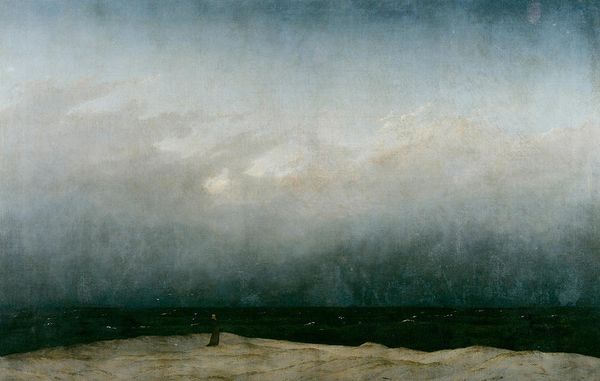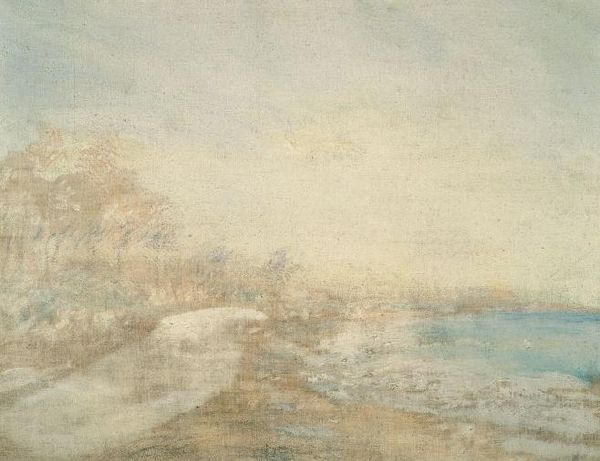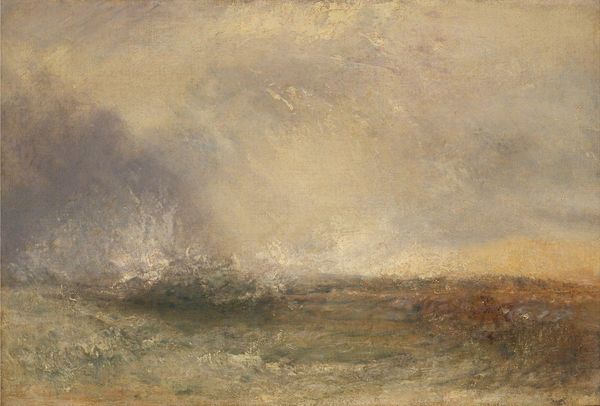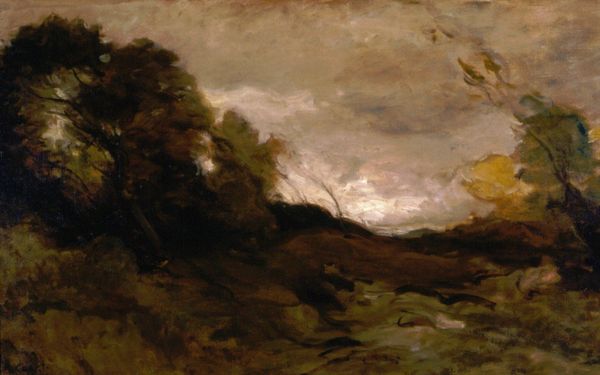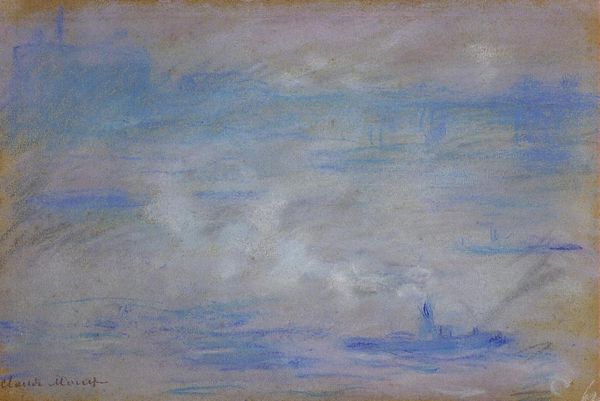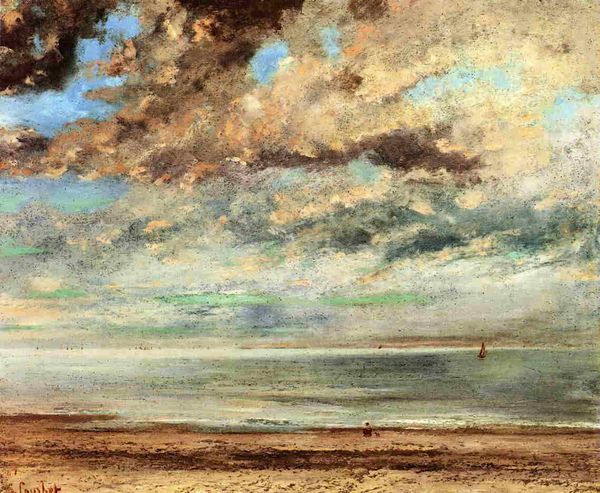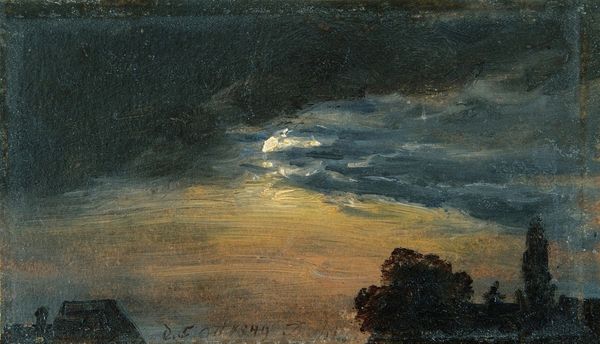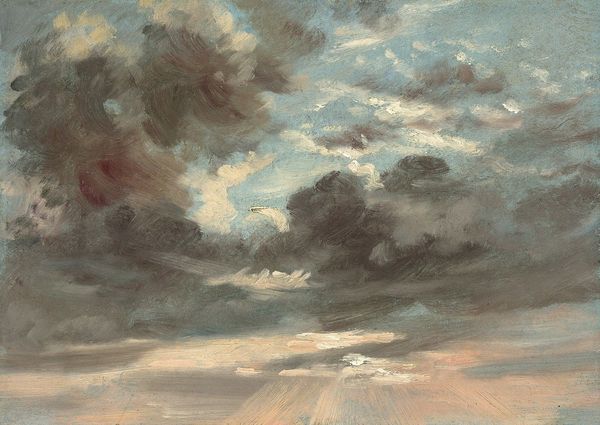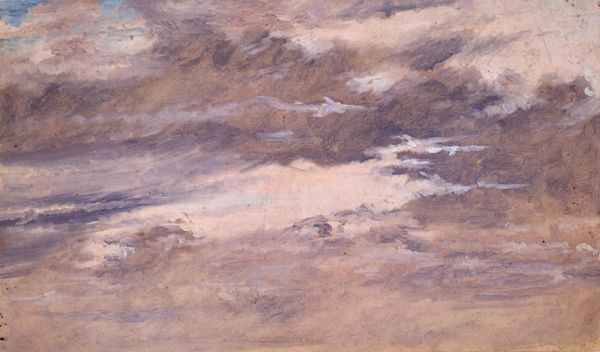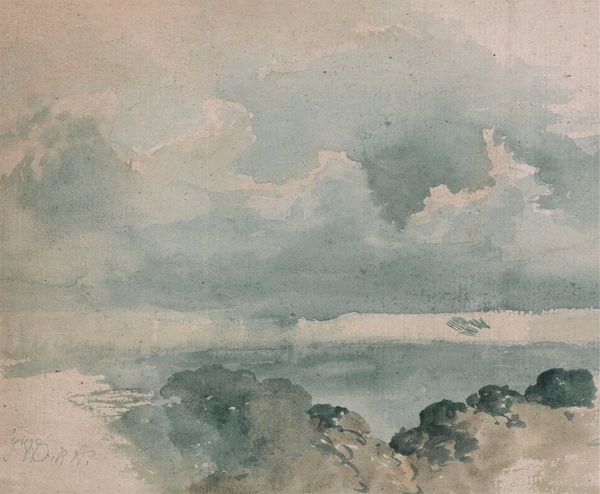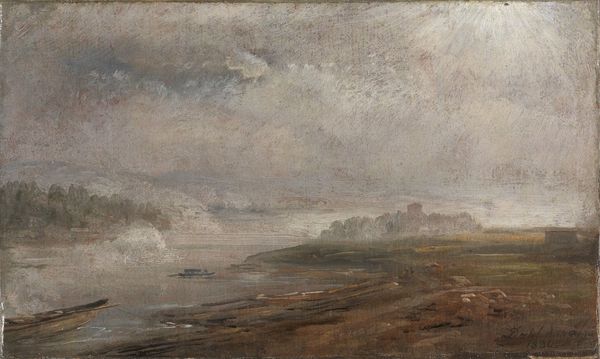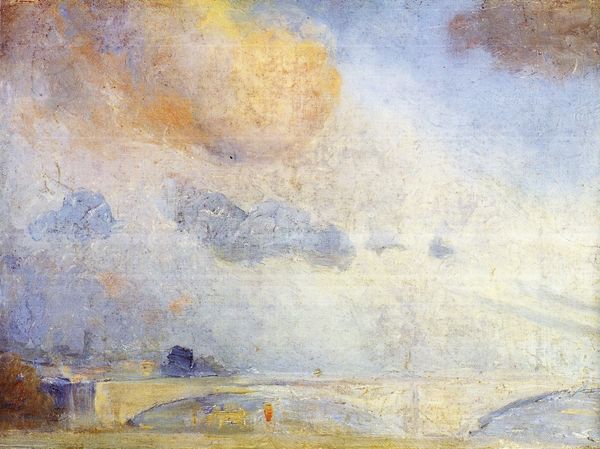
Copyright: Public domain
Editor: This is Tom Roberts' "Storm at Sea," painted in 1907 with oil paints. I’m struck by the broad, almost indistinct strokes; it makes the scene feel massive and chaotic. How do you interpret this work? Curator: Focusing on the formal elements, notice the composition. The painting is divided horizontally into bands of sea, sky, and storm clouds. Observe the impasto technique, how Roberts builds up the paint surface to create texture and depth. Note the restricted palette; how the grays and yellows blend to create form. Editor: Yes, I see how the limited palette and broad strokes contribute to the sense of unease. Is there a narrative here, or is Roberts more interested in the sheer impact of the storm itself? Curator: Precisely. The "subject" may not be a specific narrative, but rather the exploration of form itself. Consider how Roberts manipulates light – the way it filters through the cloud breaks, creating a sense of drama but also formal unity. The way that texture manipulates form. How might that formal unity speak for his process of thought? Editor: So it’s more about the experience of the storm, the feeling, than telling a story about it? Curator: It is about conveying the sublime experience through formal manipulation, using elements like color and brushstroke to evoke emotion, using impressionistic techniques and visual cues as points of structure. Editor: That’s really interesting; I was so focused on the literal depiction, but now I see how much the brushwork itself contributes. I’m struck how formal elements really change how I read paintings now. Curator: And conversely, it can refine what you see when encountering the actual forms. Thank you for your perspective as well!
Comments
No comments
Be the first to comment and join the conversation on the ultimate creative platform.
